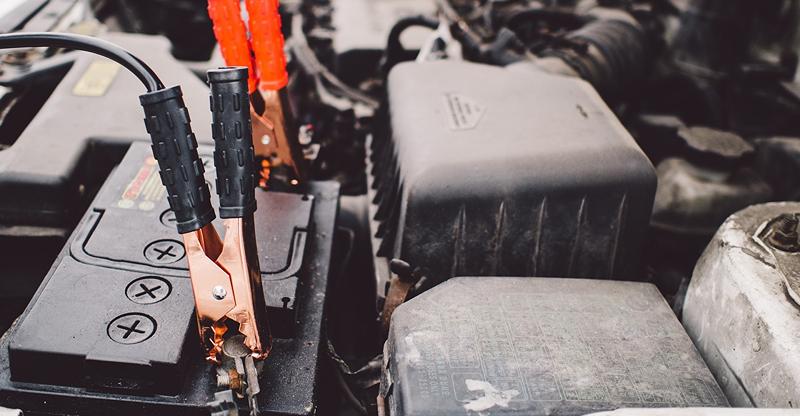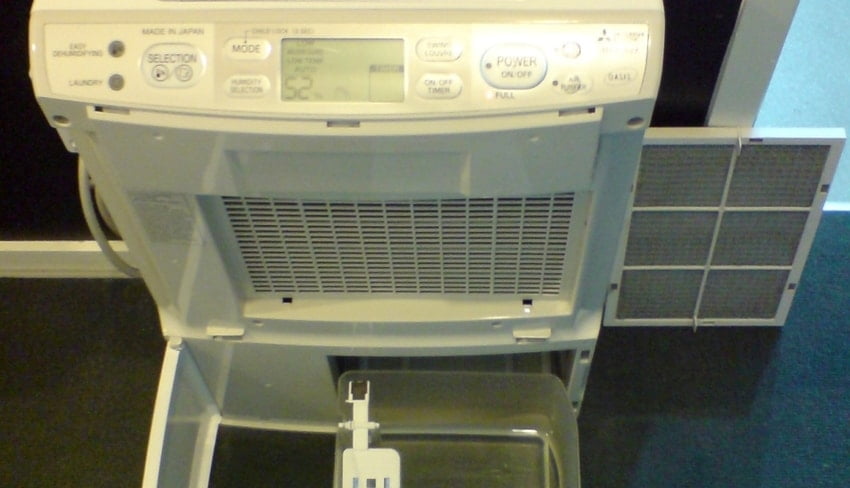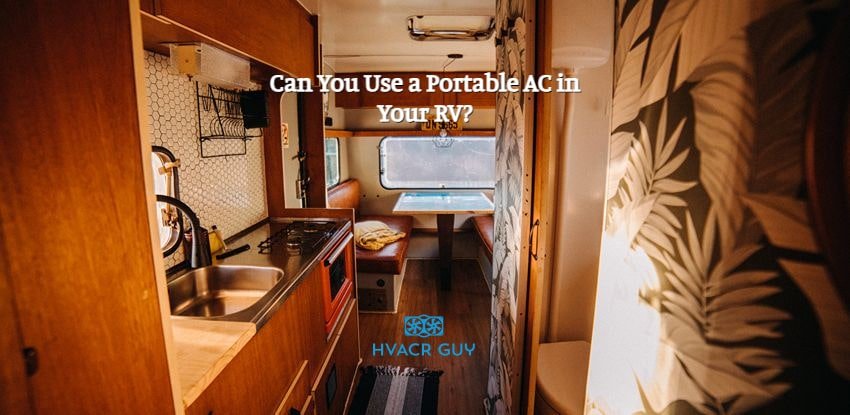Last Updated on January 1, 2024
Lead acid batteries also known as SLI batteries are the oldest ones to be used in automobiles for ignition. These days they find applications in solar inverters, UPS systems, golf carts, and even grid-scale power systems.
One of the specialties, or better say limitation of these batteries, is the gradual use of water content in their cells. This means they have to be replenished with the same amount of water.
But not any water, it must be demineralized or deionized.
Well, technically dehumidifier water is demineralized too. How about using water from a dehumidifier in your lead-acid batteries?
Dehumidifier water is technically demineralized water with very low mineral content so it is fine for use in Lead Acid batteries. However, distilled water is recommended for your batteries as water from the dehumidifier may contain contaminants, slime, and metal content from the cooling coils and dripping pan.

When is it OK to use dehumidifier water in batteries and when it’s not? Is water from your dehumidifier properly demineralized and deionized? What are the tools and methods to know that for sure? How to safely replenish your batteries with dehumidifier water?
I plan to answer all these questions in this article after thorough research and asking several people in the industry.
Why Batteries Need Water?
First of all, not all batteries need water, only Lead Acid wet batteries need that with time. You can recognize them with caps or covers on top of cells that can be taken off.
For these batteries to work they require electrolysis. Which means water is converted to hydrogen and oxygen. This is why the water level in your battery reduces with time and has to be refilled back.
Low water levels mean less electrolyte which means lower performance. But if water reduces to the extent that battery plates are exposed, it will lead to sulfation causing lower battery life performance.
Depending on your usage you should check the water level in your battery cells every week to every month.
Some have an indicator that turns white with inadequate water levels and green when they have enough water. While in others you may have to check water levels from the side or top of the cells.
Pro Tip: Batteries reproduce water when charged. Always fill water in your batteries after they are fully charged to prevent overwatering and making electrolytes very high.
Most experts recommend keeping water about 0.5 to 0.25 inches below the top cover.
What Type of Water Dehumidifier Collects?
Dehumidifier collects water directly from the environment by a process called condensation. During this process, air from the room is allowed to consistently pass through super-cooled dehumidifier coils.
As a result, humidity in your room’s atmosphere slowly converts to liquid water. It trickles down the dehumidifier coils and falls into your dehumidifier’s water tank.
Water collected by your dehumidifier is directly pulled from the air, so it is technically free from the minerals that you find in tap water.
By principle, dehumidifier water is demineralized water, theoretically having a mineral content of zero. This makes it great for use in lead-acid batteries.
For the same reason, many mechanics advise putting dehumidifier water instead of tap water in your car’s radiator for engine cooling to prevent mineral buildup.
Why You Shouldn’t Put Tap Water in Your Batteries?
Tap water is unacceptable for use in batteries as it is abundant in minerals that can cause severe chemical imbalance and interference.
In fact, The USDA’s Nutrient Data Laboratory (NDL) conducted a study of the mineral content in residential tap water with water samples from over 144 sites. Here’s a look at the results:
| Mineral | ppm (Parts Per Million) |
| Calcium | 30.5 |
| Copper | 0.1 |
| Iron | 0.02 |
| Potassium | 4.9 |
| Magnesium | 9.5 |
| Manganese | 0.0025 |
| Sodium | 38 |
| Phosphorus | 0.145 |
| Zinc | 0.05 |
The table above represents an average of different mineral constituents in tap water you find in the United States.
Most of these minerals are metals and conductors which can be destructive to lead acid batteries if ever used in a battery.
Is Dehumidifier Water Safe for Use in Battery?
Dehumidifier water is condensed directly from the atmosphere. This means there is supposed to be no mineral content in it.
However, in actuality, there will still be some minerals present in it as during the travel of water to the dehumidifier tank many impurities get added. Especially when it comes in contact with dehumidifier cooling coils.
But you might think, how much mineral content is OK to be used in a lead acid battery? Well, the most suitable measure for it is TDS (Total Dissolved Solids).
According to most experts, it is safe to put water lower than TDS of 5 mg/L or ppm in your batteries. If the TDS of water in your dehumidifier tank is lower than that you may go ahead and use it.
To give you an idea, the TDS of tap water in New York City is about 50 mg/L but it can go up to 250 mg/L in long island.
Interesting Information: TDS is measured in mg/L (milligram per liter) but it is also given by ppm (part per million). In fact, they are the same thing.
1 mg/L (milligram per liter) = 1 ppm (parts per million)
How to Know TDS (Total Dissolved Solids) of Your Dehumidifier Water?
There is a very simple device available for measuring TDS (Total Dissolved Solids) called a TDS meter.
To save you time, I already researched and selected the best digital TDS meter on your behalf based on quality, price, and ease of measurement. Have a look at its specifications. This one also tells Temperature and EC (Electrical Conductivity) of water besides TDS.
Usage of TDS Meter:
- Push the ON button on TDS meter.
- Dip its bulb 1 inch in water inside your dehumidifier tank.
- Wait for about 10 seconds or suitable time indicated by the manufacturer.
- Press the hold button and note the TDS reading.
Besides that, you could also use this TDS meter for checking minerals and metals in any water, especially the one you drink.
It will also help you decide the authenticity of distilled water before you use it for a purpose like using it in a radiator.
What To Do If TDS of Dehumidifier Water is More Than Recommended (>5 ppm)?
Normally, for dehumidifier water TDS should be less than 5 ppm. If it is more than that, and especially far more than that I would ask you to try again after cleaning your dehumidifier thoroughly.
Clean the filters, cooling coils, water dripping area and pathways, and water tank. After that run your dehumidifier and check the TDS of water again.
This is because these minerals and contaminants are dissolved in water after it is condensed. After cleaning you will hopefully be able to avoid most of these in your water.
I would recommend doing so with dishwasher liquid and water. Then after that with plain clean water. Allow the filter to dry before reinstalling it.
After a thorough cleaning, run your dehumidifier again and test the TDS for freshly condensed water in its tank with the TDS meter. I expect that it would be low enough for use in your batteries.
If TDS is lower than 5 ppm you may use it, If TDS is fairly higher than 5 ppm then don’t, as it will be a risk using it in your batteries.
Limitations of Using Dehumidifier Water in Your Batteries
Most industry experts recommend using water with a TDS lower than 5 mg/L or ppm in wet batteries. Here’s how to test the TDS of any water.
However, this is a limitation to this criterion based on TDS.
TDS is an indication of the total dissolved solids in water. However, a TDS reading won’t show you which solids especially metals are actually dissolved in dehumidifier water.
For example, your dehumidifier water can have a TDS of 3 ppm which is fairly low to be used in battery water, but if all of it is a highly conductive material like copper, low TDS won’t matter.
Of course, the chances of this happening are low but my point is you still don’t know the combination of solids dissolved.
By the way, there is a reason why I gave the example of copper metal. This is because your dehumidifier cooling coils are usually made of copper or aluminum which are highly conductive metals.
Dehumidifier works by passing air over these chilled coils. Water condenses on these coils and drips into the condensate pan. There is a possibility for some metal from cooling coils to end up in dehumidifier water.
Furthermore, if you have not cleaned your dehumidifier for a while, you can expect other contaminants like mold, muck, and dirt particles to mix with water.
Despite a good TDS rating not knowing what actually is in dehumidifier water makes me worried about its use in wet batteries.
Why Distilled Water is Best for Batteries?
Water that is distilled has all the minerals and metals removed from it. It is pure from the contaminants with TDS close to 0. This will prevent any ionic imbalance when put in batteries.
In most cases, with a dehumidifier cleaned in routine, you will be OK to use its water but distilled water is the safest bet.
You could buy this water cheaply from your local grocery or medical store. A gallon of water will run for a long time.
Or you could simply buy these packs of 12 distilled water bottles. Each of them is 16.9 fl oz. Collectively they are a little above 1.5 a gallon.
This way you would be able to use them separately with less chance of contamination and safely keep them in a little space in your vehicle.
How To Add Water to Your Lead Acid Batteries? The Right Way
After going through all the factors in this article, you can decide if water from your dehumidifier is OK to be used in your lead-acid battery. Now it is time for filling it out.
Filling water in your batteries is a very simple process. Just follow these simple steps that will ensure proper and safe filling to the required levels:
- Completely charge the battery before adding water.
- Put on safety gloves and glasses.
- Pop open the cover that is covering the cells.
- Some batteries have individual caps on each cell. In that case, you will have to unscrew these caps.
- Now start adding water to those cells. Use an additional accessory to prevent spilling. I have given multiple useful options below. Fill each cell 1/2 inch above the internal plate or 1/2 inch below the top cover of the battery.
- Put the cover or screw tight caps back in place.
Helpful Guidelines When Watering Batteries
- In case you are using dehumidifier water, check its mineral content with a TDS meter (< 5 ppm). Then go through other variables in this article to make sure you can use it.
- Add water through a funnel so it does not spill over the battery.
- My recommendation is to use a battery filler, it will automatically fill each cell to the recommended level and prevent spilling at the same time.
- Battery cells aren’t connected, so you must add water to each cell individually.
A Way to Make Battery Filling Super Easy
You can use a funnel to add water to the battery but my personal preference is a battery filler.
Watering your batteries is a routine process. Battery filler will make battery filling super easy and quick in two ways:
- It will prevent spills and after-drip through a spring mechanism.
- Battery filler will shut off automatically after individual battery cells have filled to adequate levels.
This way you won’t need to worry about getting water at the accurate level in each cell this thing does that automatically.
What Happens When You Overwater or Underwater Batteries?

Whether you are using lead-acid batteries for a golf cart, a solar system, or even a UPS, filling them just to the right level is crucial.
More as well as less water level will hurt your batteries.
If batteries do not have an adequate amount of water, meaning when underwatered, they will lead to sulfation which will cause the battery to have longer charging times, reduced power, and less life.
Overwatering will cause electrolyte levels to spike and damage the battery.
This is one of the reasons why I recommend battery filler to automatically fill cells to the recommended levels and much quicker.




